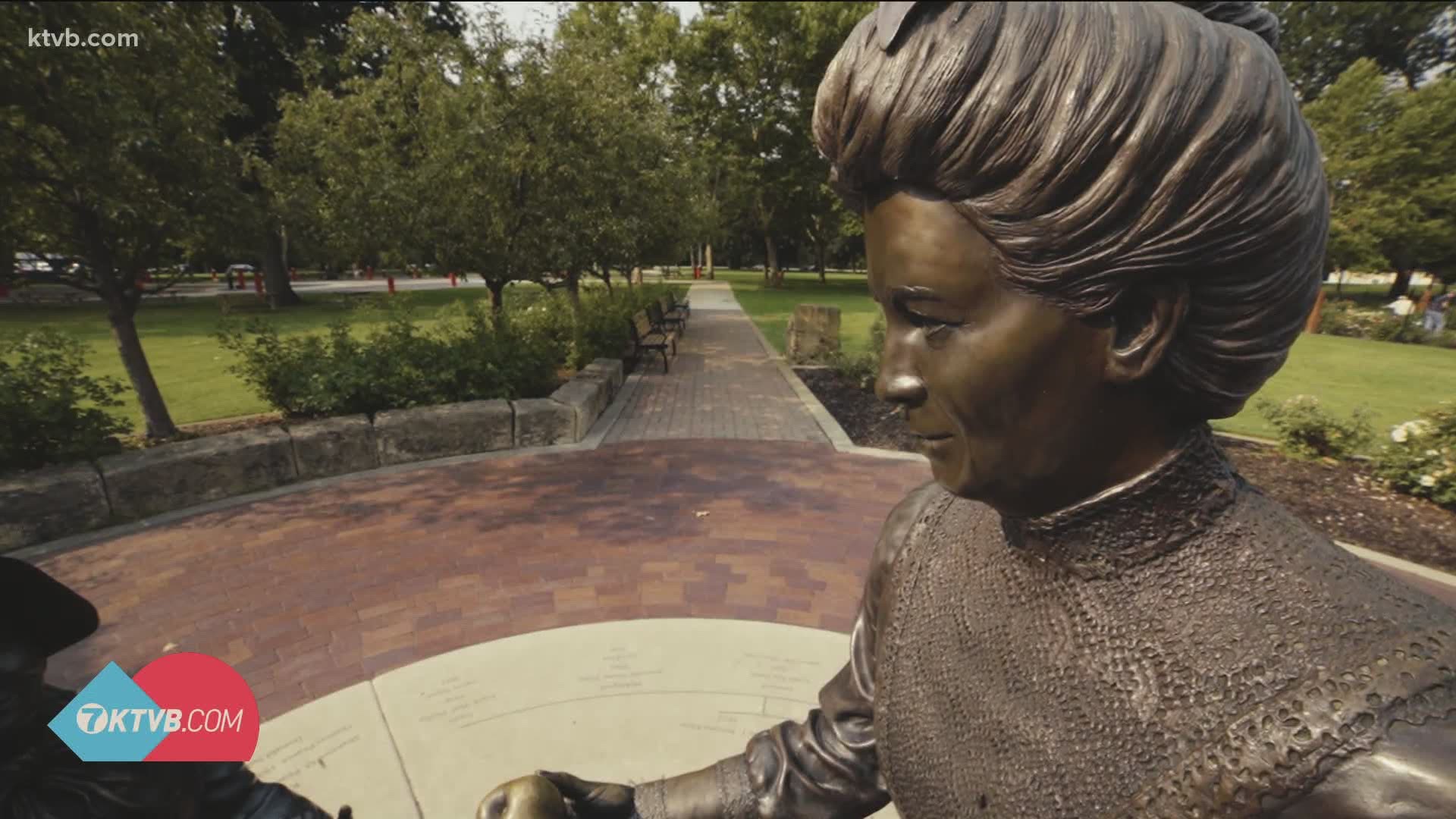BOISE, Idaho — Before the city of Boise was founded in 1863, two early pioneers turned what was once a thriving apple orchard into a downtown park that would eventually be known as Julia Davis Park.
Boise's oldest park is the first of what is known as the Ribbon of Jewels, a series of parks named after prominent local women, such as Ann Morrison and Esther Simplot.
Julia Davis Park began to take shape in the late 1800s, about 35 years after the city of Boise was founded. More than 100 years later, the park has become a must-see destination.
"It is a passive park and adds a great deal of culture and history to the history of Boise," said Doug Holloway, the director of Boise Parks and Recreation.
In 1862, Thomas Jefferson Davis headed west out of Cincinnati, Ohio with his brother, Frank. The two set off with the goal of getting rich from gold.
Davis came as a miner and took the first water ride out of the Boise River, according to Diane Davis-Myklegard, his great-granddaughter.
Gold was difficult for Davis to find. In 1869, however, a woman named Julia McCrumb came from Ontario, Canada to visit family when she met Davis. The two quickly became quite the couple.
McCrumb and Davis were married by 1871. Together, the two helped plat the growing city of Boise.
"(Davis) was very progressive. He wanted to see Boise expand, and so (McCrumb) fit right in," Myklegard said. "They were quite a team, the two of them."
McCrumb became known as the Welcome Wagon of Boise, as she dedicated her time to helping emigrants traveling on the Oregon Trail.
"She was a really, really nice lady," Myklegard said. "She would come down to the park, which was still an apple orchard and bring things for the pioneers."
The area was prone to flooding due to its proximity to the Boise River. Because of this, Davis considered conferring it to the city for it's first public park.
"The city was concerned about the cost of having a park and taking that responsibility on, so they kept pushing back on it," said Brandi Burns, the history program manager for the city of Boise.
That resistance changed in 1907 when Julia McCrumb-Davis passed away.
"And so finally when Julia died, Tom said 'You will take the park and you will name it after her,' and it will forever be known as that," Myklegard said.
Because of the area's water issues, it wasn't exactly a park for many years. It was used as a city dump during it's early years.
"They layered mattresses and clothes and other items like that on the bottom layer, and then they put other bottles and other trash on top of that," Burns said. "And then just over the years built up the land and covered it with grass."
By the 1920s, the park began to take shape. Over time, the cultural buildings that are still standing today began popping up, such as the Gene Harris Bandshell, the Boise Art Museum, the History Museum and the iconic Rose Garden.
Most recently, the Black History Museum claimed its spot in the park.
"The rose garden itself dates back to 1939," Burns said. "It was dedicated by a group called 'The Cutworms.' They were a male-only gardening club and in 1938 they had planted 1,500 roses from Portland and another 300 from a New York nursery."
The city of Boise is adding one more piece to the park. The piece will be called 'Fly High' and will be a window near the AG Pavillion along the river pathway. It will honor the men and women who have died in combat.
To donate to the project, click here.
Join 'The 208' conversation:
- Text us at (208) 321-5614
- E-mail us at the208@ktvb.com
- Join our The 208 Facebook group: https://www.facebook.com/groups/the208KTVB/
- Follow us on Twitter: @the208KTVB or tweet #the208 and #SoIdaho
- Follow us on Instagram: @the208KTVB
- Bookmark our landing page: /the-208
- And we also turn each episode into a podcast on Podbean
- Still reading this list? We're on YouTube, too:

